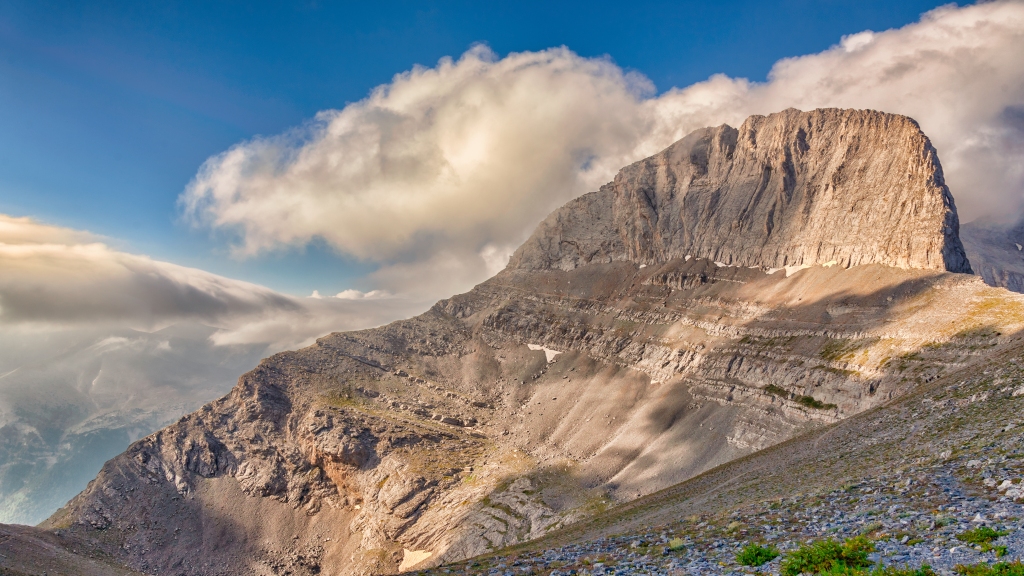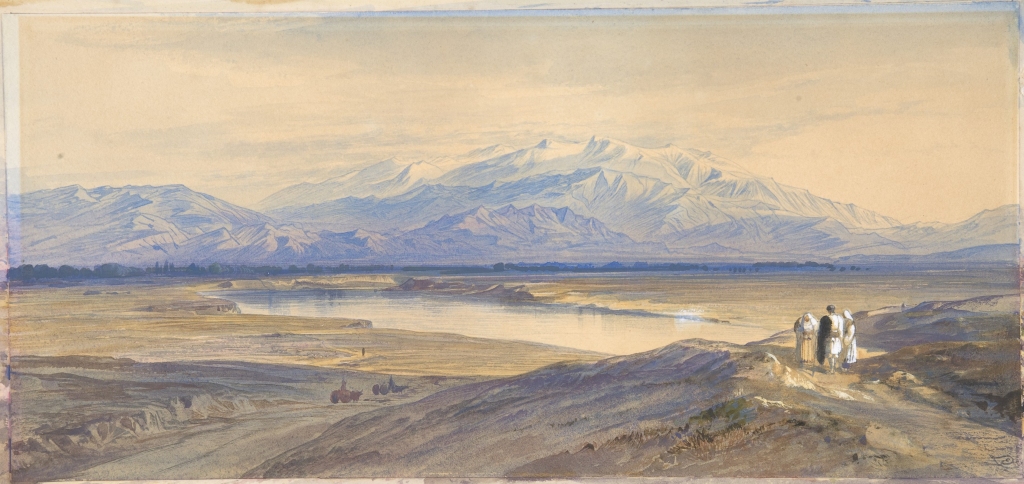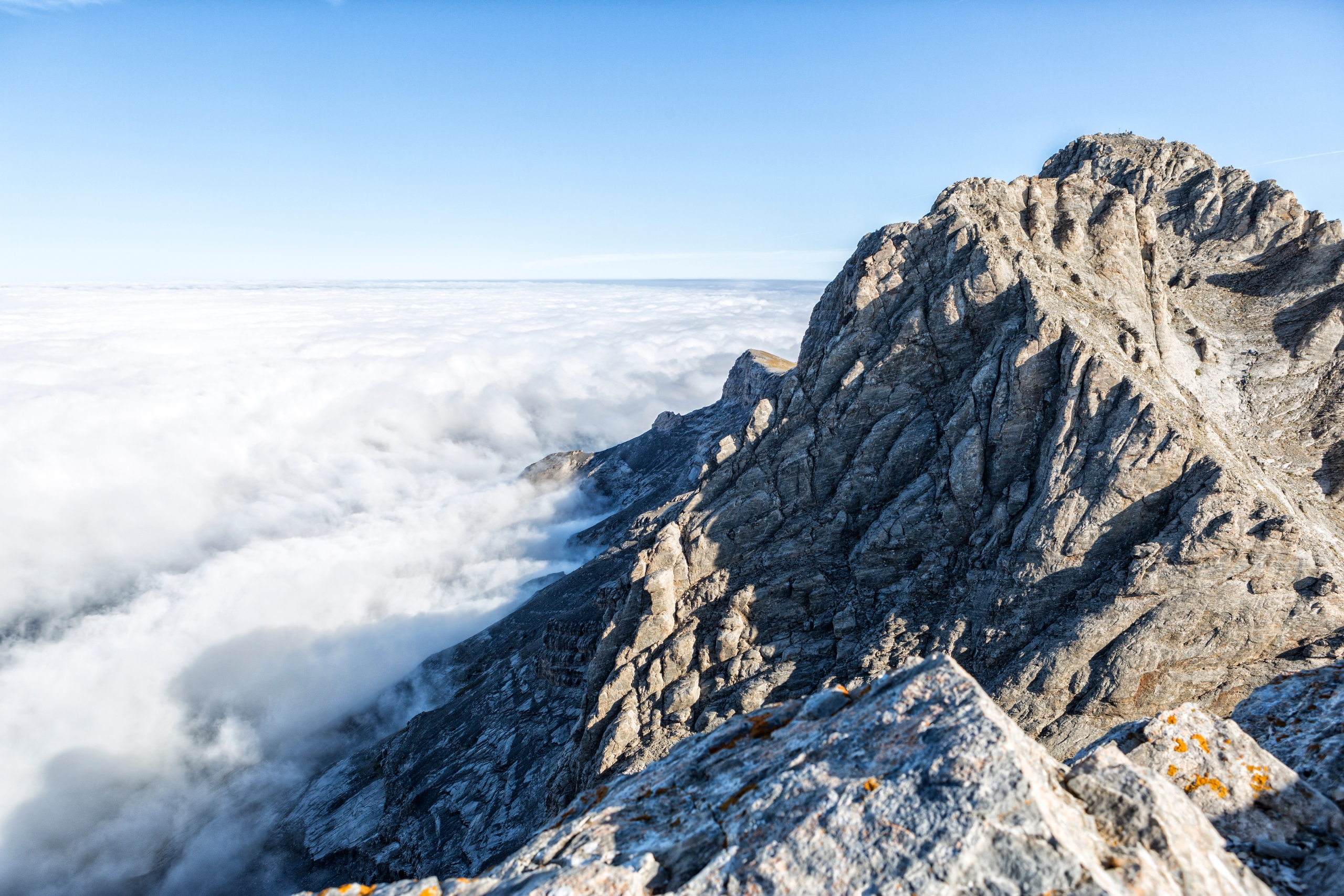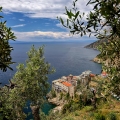Mount Olympus, the highest peak in Greece, has long been a place of pilgrimage, not only for its mythic status as the home of the ancient Greek gods but also as a site of spiritual importance through the ages. Rising to 2,918 meters at its highest point, Mytikas, this imposing massif has inspired reverence, exploration, and spiritual curiosity for millennia.
The sacred mountain of the ancients
In antiquity, Mount Olympus was believed to be the divine seat of the Twelve Olympian Gods, led by Zeus, the god of sky and thunder. The mountain’s imposing silhouette, often shrouded in mist and capped with snow, gave it an otherworldly aura that fed the imaginations of ancient poets and pilgrims alike. The nearby sanctuary of Dion, situated at the mountain’s foot, served as a major religious center for the ancient Macedonians, where sacrifices and rituals were performed in honor of Zeus. This sacred city flourished from the 5th century BCE to the 5th century CE, and its well-preserved ruins, including temples, altars, and theaters, provide a privileged glimpse into the spiritual life of ancient Greece.
Mount Olympus also played a role in the legendary Orphic Mysteries, a mystical tradition said to have been founded by Orpheus, the mythical poet and musician. According to tradition, Orpheus taught his followers the secret rites of Dionysus in the forests and caves of the mountain’s lower slopes, blending elements of pre-Hellenic nature worship with the more structured Olympian pantheon. Archaeological evidence, including ancient pottery, coins, and traces of sacrificial ashes dating back to the 4th century BCE, supports the long-standing spiritual significance of Olympus’s peaks.

A sanctuary through the ages
Mount Olympus has also witnessed the ebb and flow of civilizations, from the rise of Macedon to the turmoil of the Ottoman Empire. During the nearly 400 years of Ottoman rule, the mountain, known as Semavatevi in Turkish, served as a refuge for the klephts and armatoloi—Greek guerrilla fighters resisting Ottoman control. The rugged terrain provided an ideal stronghold for these bands, who operated as both defenders of local Christian communities and symbols of resistance against foreign rule.
In the late 15th century, the armatoloi of Olympus formed one of the earliest organized resistance movements, led by figures like Kara Michalis and Panos Zidros, whose exploits are still celebrated in local folklore. The mountain remained a center of defiance into the 19th and 20th centuries, playing a critical role in the Greek War of Independence and later, as a base for partisans during the Second World War and the Greek Civil War.

Christian pilgrimage and monastic tradition
Besides its deep roots in ancient Greek religion, Mount Olympus also became a significant site for Christian monasticism. Today, it hosts some of the highest-elevation chapels in the Orthodox world, including the small but revered Chapel of Prophet Elias on the summit that bears his name, at 2,803 meters. This mountaintop shrine, dedicated to a prophet traditionally associated with high places in Greek Orthodox tradition, was built in the 16th century by Saint Dionysios of Olympus, a hermit who retreated to the mountain in search of solitude and spiritual clarity.
The Old Monastery of Saint Dionysios, founded by the saint himself in the 16th century, still stands at 820 meters in the Enipeas Gorge, though it bears the scars of repeated destruction – first by Ottoman forces and later by German troops during World War II. Despite this turbulent history, the monastery remains a significant pilgrimage site, attracting visitors who come to pray in its tranquil courtyards and reflect on the endurance of faith amid hardship.

Other monastic sites on the mountain include the Monastery of Agia Triada Sparmou, located at 1,020 meters on the mountain’s western slopes, and the Monastery of Kanalon, founded in 1055 by the monks Damianos and Joakim. These remote sanctuaries, often shrouded in mist and surrounded by ancient forests, provide an atmosphere of profound solitude and spiritual focus, appealing to modern pilgrims seeking a deeper connection to the sacred.
The modern pilgrim’s path
For today’s visitors, climbing Mount Olympus is a challenging but deeply rewarding experience. Most modern pilgrimages to the peak begin in the coastal town of Litochoro, often called the City of the Gods for its location at the foot of the mountain. From here, a network of well-marked trails leads through dense pine forests, past roaring waterfalls, and across rocky ridgelines to the mountain’s highest summits.
While the lower slopes are relatively accessible, the final approach to Mytikas, the highest point, involves a steep, exposed scramble that requires both physical endurance and a head for heights. Despite these challenges, over 10,000 people attempt the climb each year, many driven not just by the desire to conquer a physical peak, but by a deeper sense of spiritual exploration.
A journey through history and myth
For those who undertake this journey, Mount Olympus offers a powerful connection to the ancient past – a place where the echoes of forgotten gods mingle with the whispered prayers of monks and the songs of guerrilla fighters. It is a place where the physical and the spiritual meet, where the rocks and forests bear witness to millennia of human longing for the divine.
Whether viewed as the seat of Zeus, the refuge of saints, or the stronghold of rebels, Olympus remains a mountain of myths and memories – a place where the air itself seems to hold the weight of history.





